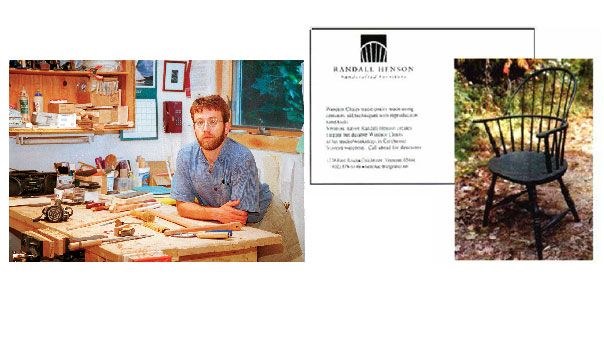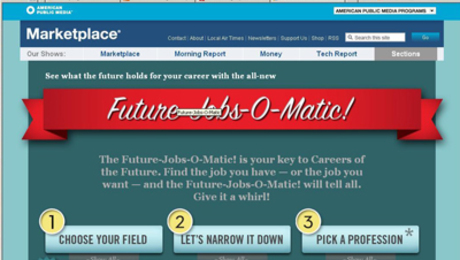
Success story. Barry Thompson, of Virgilina, Va, Barry is the most successful student Dunbar have ever had go pro and carving out an identity for himself and his business. One of his most effective techniques is to have a customer take a chair home and use it.
Michael Dunbar wrote an article in 2000 about Going Pro. We’re republishing his 8 tips for Going Pro on our new blog The Pro Shop. Read his first four tips here.These tips focus on marketing and publicity without any mention of Web sites, email, blogs, Twitter, or video due to the age of the article. How have things changed? Do you still need an expensive portfolio and brochure? Do you need to spend a lot of money getting a Web site designed?
How to succeed, in eight not-so-easy steps, continued…
5. Develop an identity for you and your business
The world is full of good woodworkers who cannot sell their products. These people, struggling until the inevitable end, give rise to the old joke: What does a woodworker do when he wins the lottery? Answer: He keeps working wood until the money is all gone.
Learning how to sell is a must
You will not make a living working wood until you learn to sell—until people give you checks for your work and enough of them to make ends meet.
Devote one day a week to marketing
Remember, your commitment in going pro is to make a living, not be a starving artist. Sue advises our students to devote a bare minimum of one day a week to marketing. Marketing is a skill that needs to be developed the same way you developed your woodworking skills: through learning and practice.
Take a lesson from politicians—There are lots of woodworkers out there who are as good as you are. So the first thing you must sell is yourself, by developing an image in the customer’s mind about you and your work. Sue explains that this is very similar to a political campaign in that voting and buying are both acts of confidence. For a free education, use the next election cycle as a marketing primer.
Find out what customers want
A politician begins by finding out what the public wants, frequently through polling. Next, he seizes the initiative by defining both himself and his opponent. He controls his image and shapes it in the voters’ minds by focusing the voters on the issues that cast him in the best-possible light. He emphasizes his virtues and his opponent’s shortcomings. He sprinkles his message with lots of value-loaded words.
Do the same. Begin by knowing your customer. Sue tells our students who go pro that the people who want to buy Windsors fall into two categories. The first is antique people. Old Windsors are so expensive (the record price for a single chair is more than $50,000) that only the wealthy can afford them. A $600 handmade copy is a bargain in an antique collector’s mind. Another group of potential customers is people who like quality. They buy paintings rather than prints, a Mercedes rather than a Ford.
Determine what sets your work apart. The opponent is factory-made chairs. For a chair maker, the problem is convincing buyers that they should spend $600 for a chair when chairs are available in many stores at $79.95. Sue tells students to focus on quality—to point out the joints and engineering that have caused so many 200-year-old Windsors to remain as tight as the day they were made, while factory chairs are at the end of the driveway in a decade. She tells our students to boast that their chairs will be passed on as heirlooms, and to lace their spiel with value-loaded words like timeless, handmade, skill and craftsmanship.
The importance of promotional materials—Even though they are expensive, have good promotional materials. This is so important that Sue strongly advises getting professional advice. Your materials can reflect your personality and be tailored to your line of work. If you do very expensive woodwork for a few select customers, have an expensive portfolio. Otherwise, consider a three- or four-fold brochure. We have a friend who makes Adirondack chairs and has good luck with a postcard.
Keep some business cards in your wallet and never be without them. Pass them out freely. Have stationery and envelopes printed. Computers are so inexpensive that you should have one if for no other purpose than answering mail. Don’t communicate on lined paper crammed into a small, personal-sized envelope.
Click here to read the rest of this article to get tips on working the media, pressing the flesh, and getting sales. Read the first part of this series here on preparing yourself, your family, and your shop.
























Log in or create an account to post a comment.
Sign up Log in